Overview
This article presents five essential steps to help you build an effective sales pipeline funnel. We understand that defining stages, customizing processes, and leveraging technology can feel overwhelming, but these elements are crucial for your success. By identifying key stages, setting metrics for success, and utilizing CRM systems, you can create a framework that not only enhances your sales processes but also improves your revenue outcomes.
Consider how these strategies can directly impact your business. For instance, defining clear stages in your pipeline allows you to track progress and identify areas for improvement. Setting measurable metrics gives you a way to celebrate your successes and learn from challenges. By integrating CRM systems, you can streamline your processes, making it easier to connect with your customers and meet their needs.
Together, we can navigate these steps to empower your business. Remember, the journey to optimizing your sales pipeline is not just about numbers; it's about understanding your customers and fostering meaningful relationships. Let's take these steps together, ensuring that your business thrives and achieves the success you deserve.
Introduction
Building a successful sales pipeline is essential for any business that wishes to transform prospects into loyal customers. We understand the challenges you face in navigating each stage—from lead generation to closing deals. By grasping the intricacies involved, companies can significantly enhance their revenue processes. Yet, many organizations find it difficult to define their pipeline effectively and optimize it for maximum impact.
What steps can we take together to not only construct a robust sales pipeline but also ensure it adapts to the ever-evolving market demands? Let's explore this journey with compassion and insight.
Define Your Sales Pipeline
To outline your sales pipeline funnel, it's important to acknowledge that it represents the journey your prospects embark on from initial awareness to becoming paying clients. Start by reflecting on these key questions:
- What are the key objectives of my sales process?
- Who are my target customers, and what specific pain points do they experience?
- What actions do I want my prospects to take at each stage?
By recording these insights, you can create a clear description of your revenue process that aligns with your business objectives. This foundational understanding will serve as a guiding light in building and managing your workflow effectively.
Keep in mind that with the typical sales period lasting around six months, having a clearly defined sales pipeline funnel is essential for accurate revenue predictions. As Michael 'Mickey' Sala wisely states, 'It’s not your responsibility to closely supervise the sales process.' However, it's crucial to understand how to predict revenue confidently and recognize when the flow isn’t supporting your growth projections.
Additionally, consider leveraging tools like Wayy.ai, which can automate outreach and help you establish over 60 target client connections each month. With daily email updates providing essential metrics on prospects reached, interest demonstrated, and conversion rates, Wayy.ai can significantly enhance your sales strategy and improve overall performance. Together, we can navigate these challenges and achieve success in your sales endeavors.
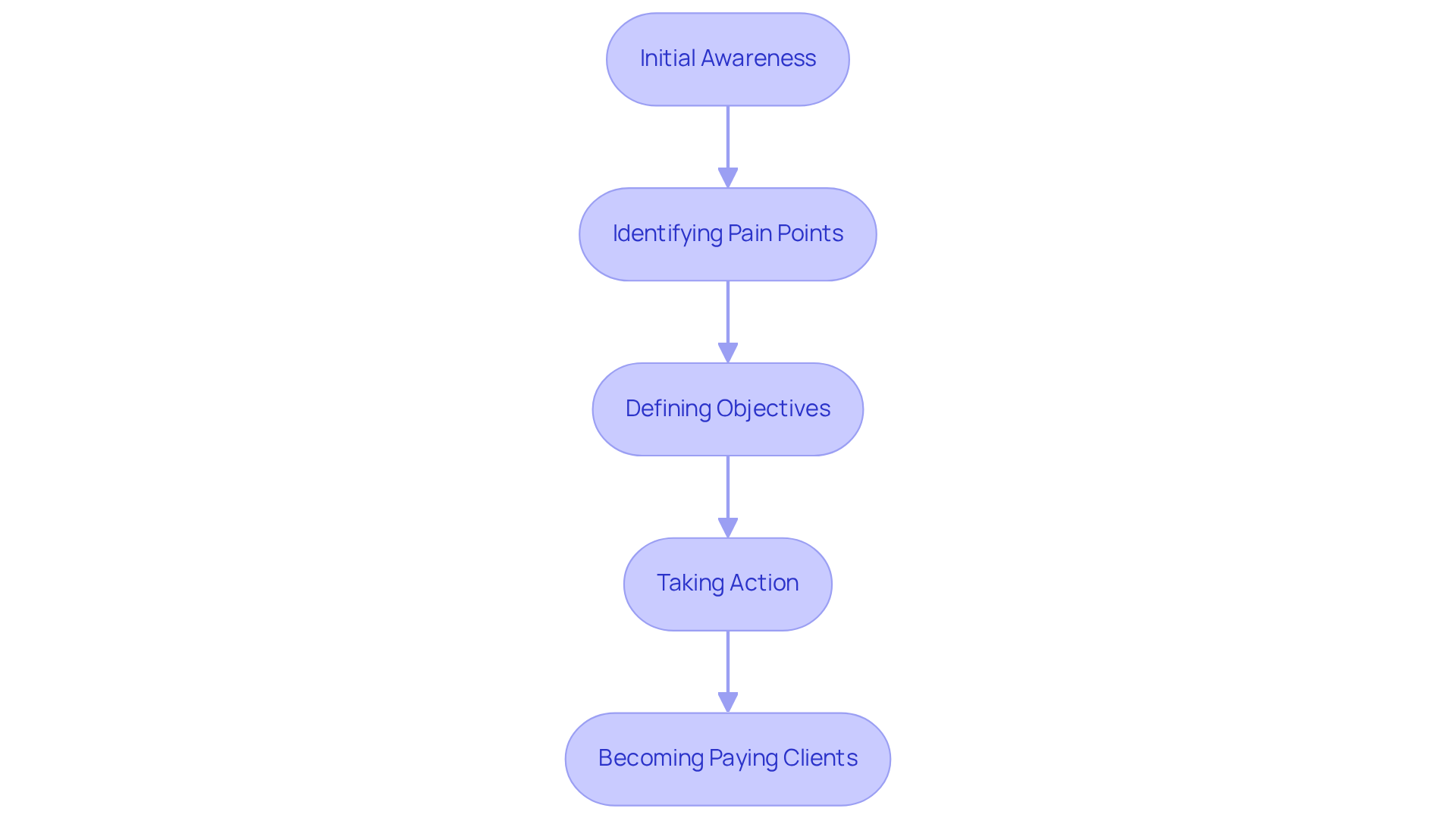
Identify Key Stages in Your Sales Pipeline
Recognizing the essential phases in your sales pipeline is vital for efficient lead management, and we understand the challenges you face in this journey. Here are some common stages to consider that can guide you toward success:
-
Lead Generation: In this initial stage, attracting potential customers through various marketing efforts is crucial. Did you know that 79% of marketers agree that email marketing is the most effective demand generation tool? By leveraging this channel, you can significantly enhance your prospect pool. Daily email updates from Wayy.ai provide insights into how many prospects were contacted and who expressed interest, allowing you to refine your strategies continuously.
-
Prospect Qualification: As you evaluate which prospects are worth pursuing, it's important to consider their suitability and interest. Research shows that 81% of prospects qualify as marketing-quality prospects (MQLs). This highlights the significance of a strong qualification process to focus on high-potential candidates. With Wayy.ai's tracking features, you can observe conversion rates and track progress over time, ensuring you concentrate on the most promising prospects.
-
Proposal: When you present your product or service to qualified prospects, it’s your opportunity to demonstrate how your offering addresses their needs. Customizing your proposals to resonate with each potential client's specific requirements is essential for building a connection.
-
Negotiation: Engaging in discussions about terms and addressing any objections can be pivotal. Successful negotiation can greatly influence conversion rates, which typically hover around 21% at this point. Clear communication and a deep understanding of the client's concerns are vital for navigating this stage effectively.
-
Closing: Completing the transaction and transforming the prospect into a client is a significant milestone. It's important to note that only 21% of leads usually transition into transactions, underscoring the need for a clearly defined closing strategy.
Tailor these phases according to your business requirements, ensuring they reflect the distinct path of your prospects. By comprehending and refining each phase, you can enhance the efficiency of your revenue process and achieve superior outcomes together.
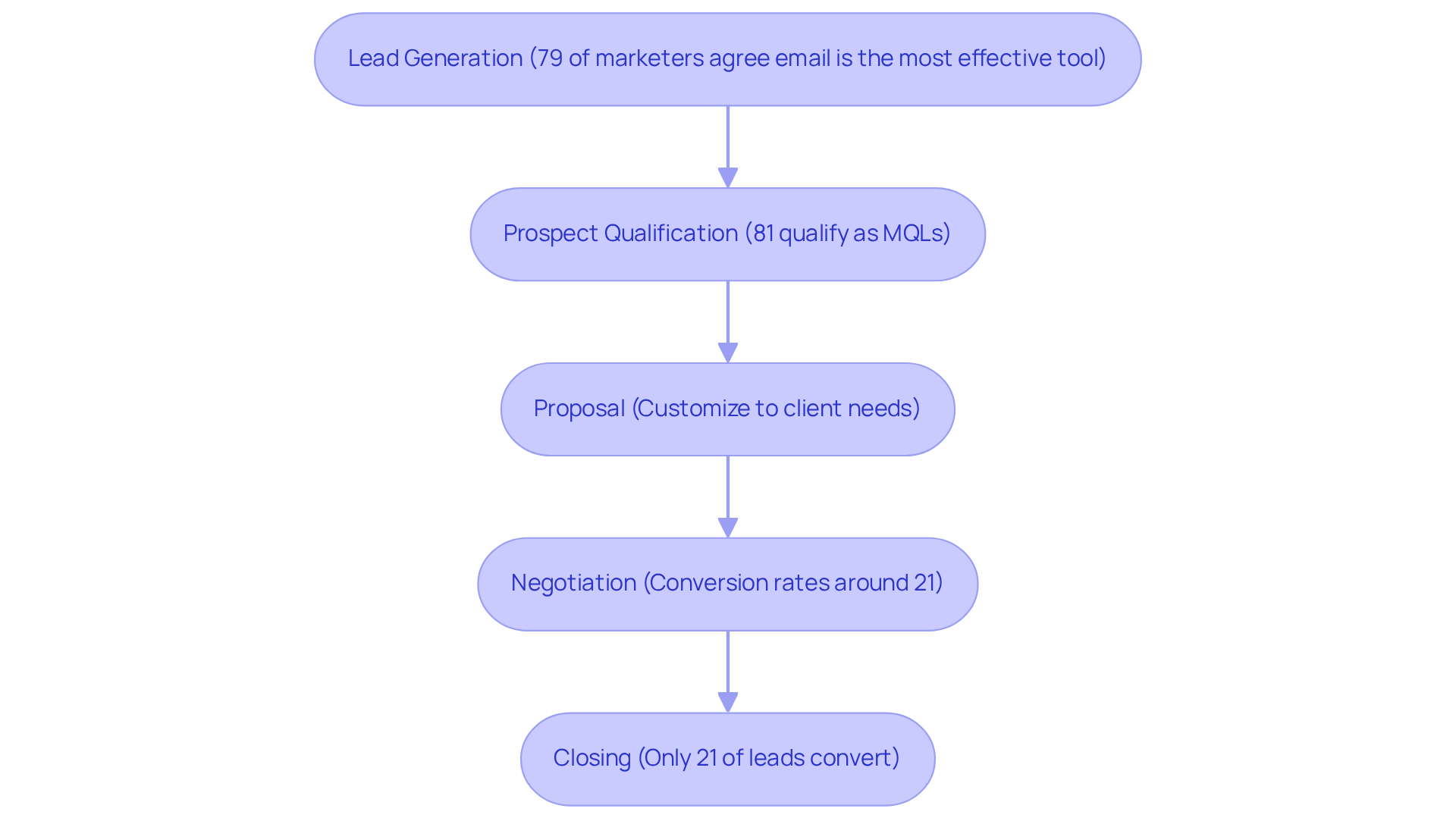
Construct Your Customized Sales Pipeline
To construct your customized sales pipeline, let’s follow these essential steps together:
- Outline Your Steps: Begin by recognizing the essential phases of your sales process. Creating a visual representation of your pipeline can provide clarity and direction, helping you see the path ahead.
- Define Actions for Each Phase: Specify the actions needed at each phase, such as sending follow-up emails or making calls. This clarity ensures that your team knows exactly what to do at every point in the process, alleviating any uncertainty.
- Set Metrics for Success: Define how you will assess success at each phase. Metrics like conversion rates and duration spent in each phase are essential for evaluating performance and making informed adjustments. For instance, companies that effectively outline actions for each selling stage often observe enhanced conversion rates. Some achieve an impressive 9.9% click-through rate in targeted email campaigns and an average email open rate of 19.2%. These statistics can be quite encouraging!
- Incorporate Feedback Loops: Implement mechanisms for gathering input from your sales representatives and customers. This enables ongoing enhancement and adjustment of your processes to meet evolving business requirements, ensuring you stay responsive to your team's and clients' needs.
Statistics indicate that companies employing tailored sales processes can greatly improve their performance. For example, Wayy.ai users can create over 60 target client connections each month, demonstrating the effectiveness of a well-organized sales process. As an ADP senior leader noted, "Our results were amazing" following the implementation of a customized approach. By adopting this tailored strategy, you ensure that your system is not only effective but also flexible enough to adapt to the evolving landscape of your business. Together, we can achieve success in navigating these challenges.
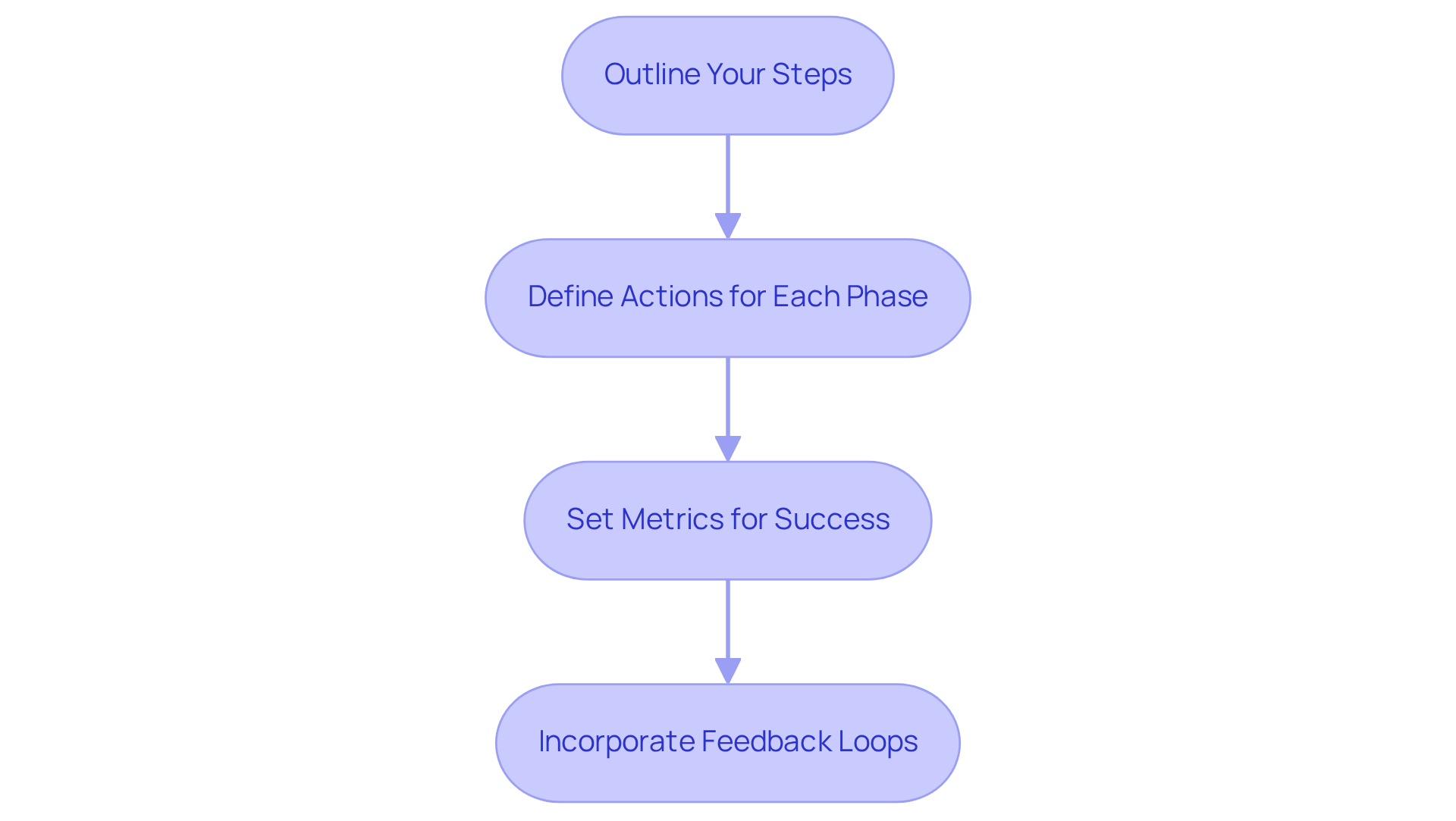
Manage and Optimize Your Sales Pipeline
To effectively manage and optimize your sales pipeline, we understand how important it is to consider the following strategies:
-
Regularly Review Metrics: Have you taken the time to consistently analyze your key performance indicators (KPIs), such as average deal size and conversion rates? Research shows that companies with strong project management increase revenue 28% faster. By regularly reviewing these metrics, you can identify bottlenecks and areas for improvement, ensuring your pipeline remains healthy and current.
-
Request Team Input: Involving your sales personnel in conversations about which strategies are effective and what difficulties they encounter can be incredibly beneficial. This collaborative approach not only fosters a sense of ownership but also reveals insights that can lead to more effective marketing strategies. Significantly, 95% of representatives indicate that relevant material impacts transactions, highlighting the value of feedback in your process.
-
Adjust Your Strategies: Are you prepared to pivot your approach based on data and feedback? Sales teams that utilize automation report a 14% increase in productivity, underscoring the importance of adapting strategies to leverage technology effectively.
-
Implement Training: Providing ongoing education for your team ensures they are equipped with the latest selling techniques. Consistent training can improve team alignment with best practices, ultimately resulting in better revenue outcomes.
By actively managing your workflow within the sales pipeline funnel through these strategies, you can enhance its effectiveness and drive better results. Together, we can ensure that your business remains competitive in a dynamic market.
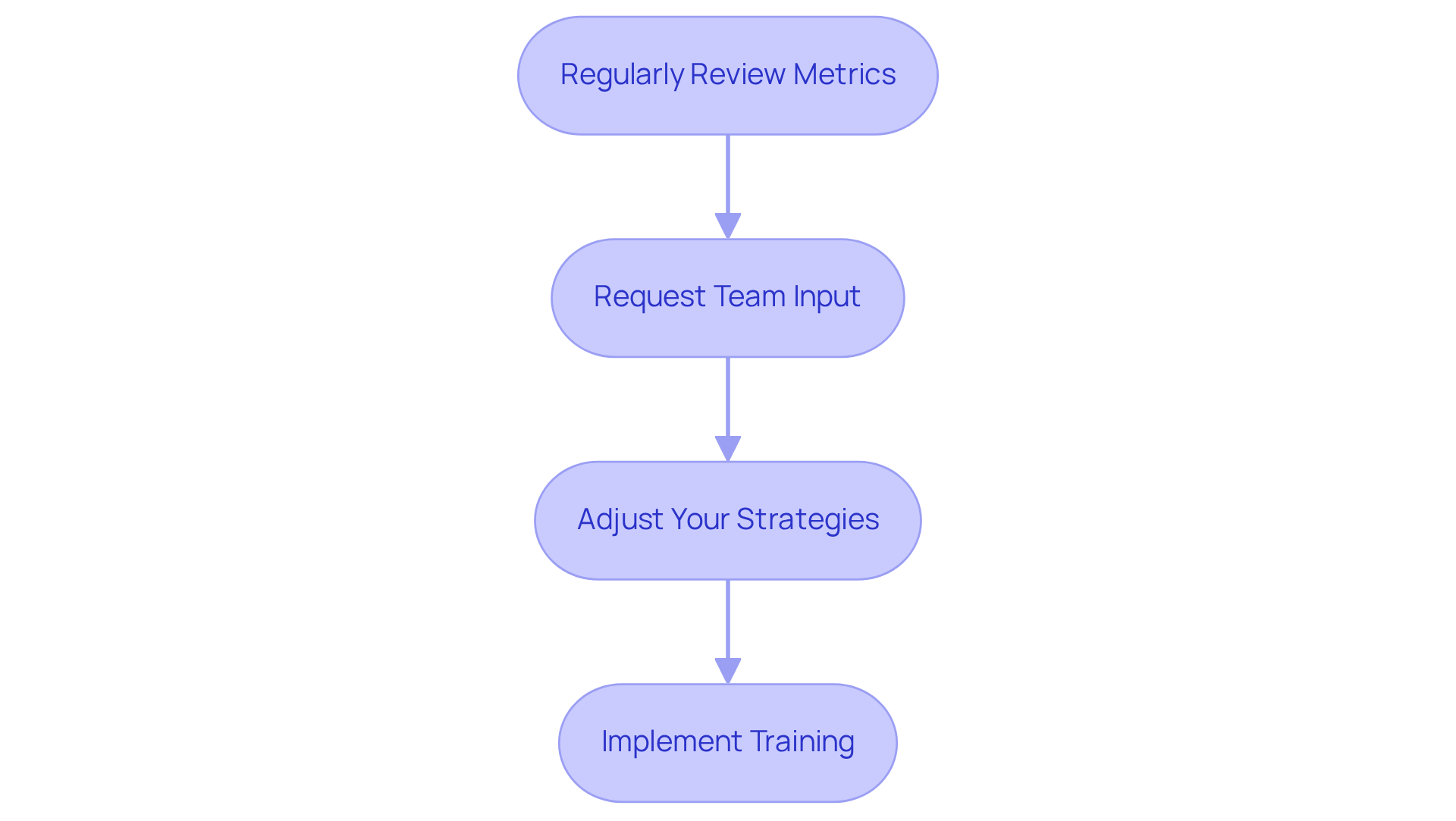
Utilize Technology to Enhance Your Sales Pipeline
To effectively leverage technology in your sales pipeline, let’s explore some nurturing steps together:
-
Choose a CRM System: Implementing a Customer Relationship Management (CRM) system is crucial for tracking leads and managing customer interactions. With 74% of businesses reporting improved access to customer information through CRM, this tool can significantly enhance your marketing strategy. We understand that having organized information can ease your stress and help you focus on what truly matters—your customers.
-
Automate Outreach: Automate your outreach efforts to ensure timely follow-ups and personalized communication, which is essential for building strong relationships with prospects. Did you know that businesses using CRM systems can boost conversion rates by up to 300%? Imagine the positive impact this could have on your growth!
-
Monitor Analytics: Utilize analytics tools to obtain insights into your revenue performance and customer behavior. Organizations that efficiently utilize CRM analytics indicate a 42% enhancement in forecasting precision, facilitating improved decision-making. With this clarity, you can make informed choices that align with your goals.
-
Integrate Communication Tools: Choose platforms that seamlessly integrate with your CRM to streamline communication with prospects. This integration can improve teamwork and ensure that your sales group has all essential information readily available. Together, we can create an environment where everyone is on the same page, fostering collaboration and success.
By harnessing these technologies, you can significantly improve the efficiency and effectiveness of your sales pipeline funnel. This allows you to focus more on closing deals and driving revenue, ultimately achieving the success you deserve.
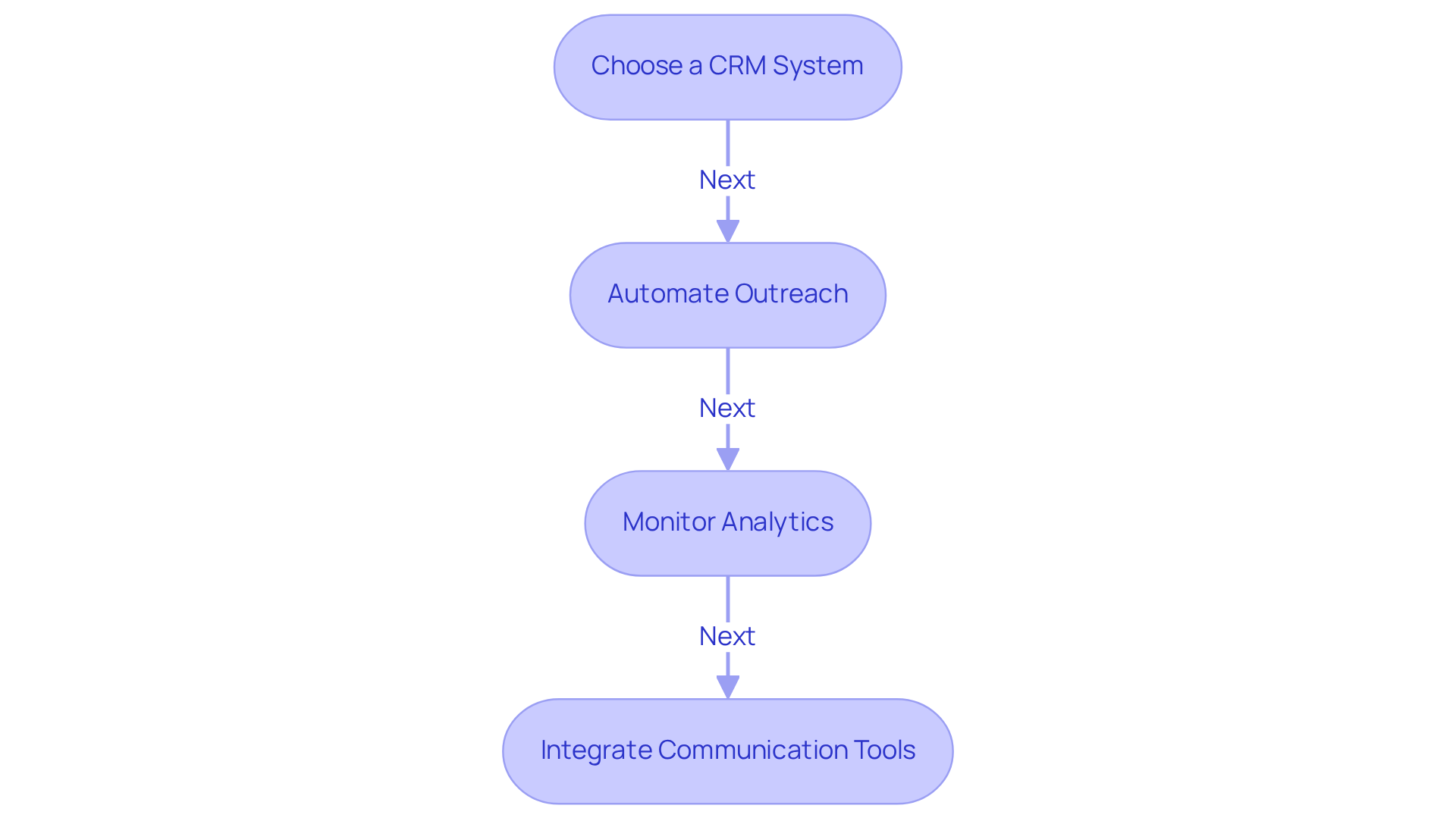
Conclusion
Building an effective sales pipeline funnel is crucial for guiding prospects from initial awareness to becoming loyal clients. We understand that defining your sales pipeline, identifying key stages, and customizing your approach can feel overwhelming. However, by creating a structured and efficient process, businesses can drive revenue growth. The insights and strategies discussed throughout this guide offer a roadmap to navigate the complexities of sales management effectively.
It's important to outline each stage of the sales pipeline, from lead generation to closing. Have you considered how employing technology and automation can enhance your efficiency? Regularly reviewing metrics, soliciting team input, and implementing ongoing training are essential for optimizing performance. Utilizing tools like CRM systems can significantly improve tracking and communication, ultimately boosting conversion rates and fostering stronger relationships with prospects.
In conclusion, the significance of a well-constructed sales pipeline cannot be overstated. By taking actionable steps to refine and manage your sales process, you can enhance your performance and adapt to the ever-evolving market landscape. Together, we can embrace these strategies to achieve greater success and maintain a competitive edge in your industry.
Frequently Asked Questions
What is a sales pipeline?
A sales pipeline represents the journey that prospects take from initial awareness of a product or service to becoming paying clients. It outlines the steps involved in the sales process.
What key questions should I reflect on when defining my sales pipeline?
Key questions to consider include: What are the objectives of my sales process? Who are my target customers, and what pain points do they experience? What actions do I want my prospects to take at each stage?
Why is it important to have a clearly defined sales pipeline?
A clearly defined sales pipeline is essential for accurate revenue predictions, especially since the typical sales period lasts around six months. It helps in understanding revenue flow and recognizing when it may not support growth projections.
How can I enhance my sales strategy?
You can enhance your sales strategy by leveraging tools like Wayy.ai, which automates outreach and helps establish connections with target clients. It provides daily email updates on metrics such as prospects reached, interest demonstrated, and conversion rates.
What are the key stages in a sales pipeline?
The key stages in a sales pipeline include: Lead Generation: Attracting potential customers through marketing efforts. Prospect Qualification: Evaluating which prospects are worth pursuing based on their suitability and interest. Proposal: Presenting your product or service to qualified prospects and customizing proposals to meet their specific needs. Negotiation: Discussing terms and addressing objections to influence conversion rates. Closing: Completing the transaction and converting the prospect into a client.
How can I tailor the stages of my sales pipeline?
You can tailor the stages of your sales pipeline according to your business requirements, ensuring that they reflect the distinct path of your prospects. Understanding and refining each phase will enhance the efficiency of your revenue process.




